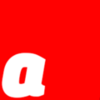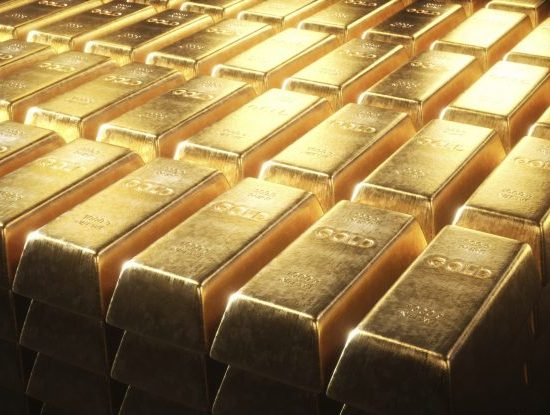 |By Matein Khalid| The global credit cycle has an immediate impact on the UAE via oil prices, the US dollar peg, cross border bank credit flows, Federal Reserve monetary policy and world trade. The IMF has cut its 2016 growth forecast to 2.6%, the lowest since 2010. A leading developer just booked a 20 fold rise in penalties from walkaway offplan home buyers. Banks hire “loan rangers” to chase skippy clients. Equities are in a bear market. The UAE credit cycle has turned ugly in 2016.
|By Matein Khalid| The global credit cycle has an immediate impact on the UAE via oil prices, the US dollar peg, cross border bank credit flows, Federal Reserve monetary policy and world trade. The IMF has cut its 2016 growth forecast to 2.6%, the lowest since 2010. A leading developer just booked a 20 fold rise in penalties from walkaway offplan home buyers. Banks hire “loan rangers” to chase skippy clients. Equities are in a bear market. The UAE credit cycle has turned ugly in 2016.
The UAE business cycle cannot remain immune to the big chill in global capital markets. For instance, the 70% collapse in crude oil and the 30% rise in the US Dollar Index has led to a 40 – 60% correction in Emaar and UAE money center bank shares since mid 2014. Property prices have also fallen as transaction volumes have halved since the high US dollar has killed offshore demand for luxury properties.
New supply planned and constructed during the bull market of 2013-2014 now face very soft end user markets. Banks are reluctant to finance property developers and even commercial projects. The cost of property finance and loan pricing spreads have almost doubled since 2013. Major banks like NBAD and Mashreq Bank have announced a rise in impairments, funds set aside to cover loan losses. The small medium enterprise (SME) sector has been devastated by the slump in world trade, high rents and a bank credit line freeze.
Thankfully, the $400 billion UAE economy has reduced its dependence on oil and gas from 90% in the late 1970’s to only 33% now, a testament to the success of the most successful diversification strategy in modern Arab economic history. Yet the $500 billion deflation shock in the GCC due to lost petro currency revenue will have a seismic impact on the UAE’s services, tourism, logistics and capital markets. The UAE is also a net creditor to the international banking system. With $2 trillion in sovereign wealth assets and a mere 12% public debt/GDP ratio, a unique cushion for an economy that blends Abu Dhabi’s oil wealth with Dubai’s diverse, networked, globalized services economy.
This does not mean the UAE economy will not face a growth decline in 2016 or the banking system escape a rise in loan losses, higher funding costs and a contraction in trade finance, syndicated lending, capital markets and wealth management fee income. Oil prices will range trade in a $25 to $40 range (Brent) in 2016 while the US dollar will remain strong as the Fed tightens (not in the March FOMC) while the Bank of Japan, ECB still print money. With Iran sanctions lifted, record 500 million barrel US inventories and Saudi Arabia’s abandonment of its “swing producer” role in OPEC, the current 1.5 million barrel a day oil glut will only worsen.
A higher US dollar and protracted lower oil prices mean the UAE economic growth rate falls below 2%. If a hard landing in China leads to history’s first “Made in Beijing” global recession, then all bets are off for the world economy and property markets. The UAE Central Bank has warned local banks against excessive risk to prevent a repeat of the 2008-9 credit cycle. Yet is saddens me to see real estate and construction loans are still one third of all loans (the figure is an alarming 70% in some Islamic banks) in the banking system. Multi-billion dollar “luxury golf course” projects financed by aggressive offshore marketing to gullible offplan flippers face a funding disaster. The lessons of excessive leverage will be relearnt by a new generation of speculators, financiers and home owners only seven year after 2009.
The UAE Banks Federation said small corporate borrowers had defaulted on AED 5 billion in loans till November 2015. This figure will rise in 2016 as anecdotal evidence of expat borrowers “skipping” town to avoid loan repayments mounts.
National Bank of Abu Dhabi (NBAD) is a bellwether as the UAE’s largest lender and flagship Abu Dhabi bank. NBAD fourth quarter profit fell 25% as impairment charges doubled. NBAD has the highest quality loan book and lowest cost funding base in the UAE. International banks such as Standard Chartered, Barclays and HSBC have all slashed corporate credit lines, announced mass job cuts and reduced rental space.
Mortgages costs are hugely sensitive to even small rate rises due to the very high loan amounts and long loan tenures. This is why the recent, significant rise in EIBOR is so bearish for home prices. With office vacancy rates at 40%, banking cuts will take a toll on commercial rents. A bank liquidity squeeze guts property prices, as the world learnt the hard way in the autumn of 2008.
Currencies – The Superyen’s strength will not last!
A ghastly week in global markets culminated in a 12% bloodbath in the Japanese Nikkei Dow 225 index, its worst weekly fall since October 2008. Global investors desperate to raise cash dumped Japanese stocks as safe haven flows led to the yen’s rise to 112 against the US dollar. Japanese equities have fallen 22% in 2016 and 2016 is six weeks old. The financial markets are sending a chilling message to the Bank of Japan. Negative interest rates alone will not depreciate the yen in a time of deflation. The yen traded at 120 in end January, a mere two weeks ago. If the yen keeps rising, Abenomics fails. Japan Inc. will not allow this to happen. I expect Abe-san will order the Ministry of Finance, Dai Nippon’s bureaucratic Valhalla, to intervene in the foreign exchange market to bloody the margin accounts of leveraged speculators in the current yen buying frenzy de jour. After all, a similar Wall Street risk aversion spasm triggered central bank intervention against the yen in October 2011, and yen volatility has now doubled since the New Year, a classic omen of imminent intervention.
Finance Minister Taro Aso has even called the yen’s nosebleed rise “rough”, a clear warning that the samurais of Marunouchi will soon emerge from the mist. It is now insane to still stay short dollar/yen at 112, even though contagion in risk assets has swept from European banks (Deutsche Bank down 38% since December. Achtung baby, was is das? Credit Suisse down 25% in two weeks. Quelle horreur!) to Wall Street credit/equities to emerging markets and even Club Med sovereign debt and a 1998 style meltdown in Asia. The forex gnomes of Tokyo tell me that 110 yen is Shinzo Abe and Taro Aso’s “line in the sand “to intervene against the yen. If so, it could be highly profitable to buy dollar/yen at 112 for a 120 strategic target. With a future Upper House election, the Japanese Prime Minister cannot take any chances. Remember this simple monetary equation. If the yen rises beyond 108, Abenomics commits political harakiri.
Dr. Janet Yellen’s Senate testimony did not concede that the Federal Reserve will do a policy U-turn and ease interest rates at the March FOMC. With a 4.9% US jobless rate, 55 ISM services, robust consumer credit growth and post Lehman highs in car sales, Janet Yellen was forced to predict “gradual” rate hikes in the US. This means international interest rate spreads (US Treasury/JGB) will continue to pressure the yen, which does not trouble Washington as the Abe government is its Cold War ally against a resurgent China. Dr. Yellen’s denial that China does not face a hard landing (I remember Bernanke saying subprime will be contained with a straight face. Machiavelli said the obvious 500 years ago in Medici Florence. Governments must lie to survive!) implies the world will not face a shock Chinese yuan devaluation once the comrades finish with Lunar New Year. So the Volatility Index (VIX) will fall, also yen negative.
I was wrong in my belief that 1.12 would be the ceiling for Euro/dollar as the scale of the bloodbath in global markets (a $7 trillion wealth hit since October!) has taken the short covering bid to 1.1320. However, on any criteria of value, from interest rates spreads to PPP to the Big Mac index, the Euro is grossly overvalued against the US dollar. However, valuations mean squat in Planet Forex when the leveraged herds flee risk at the speed of light in global markets. Euro/dollar is reacting to the mood swings of Mr. Market and risk/psychology rules the roost. Yet the surge in Euro and Euro volatility is anathema to the ECB and even the hard money harren of the Bundesbank (and Frau Chancellor in Berlin!). The ECB will cut its deposit rate to minus 0.4% in March and increase the size/duration of its bond purchase program.
Does it really make sense that the Euro surges while the world’s smart money is dumping the German Grossbanken, once viewed as the financial citadel of Deutschland AG? Should the Euro rise when Club Med bonds (Ok, Portugal faces the Atlantic but note the spike in Lusitania ten year notes – obrigado, duckies!) exhibit a sovereign credit risk SOS? Should the Euro rise amid negative German/Scandi/Benelux bond yields? Mark my words. The Euro is a sell next week at 1.13 against the US dollar. That much, at least, is certain.
Market View – The bearish case for $950 gold
Gold was considered a “barbaric relic” by John Maynard Keynes and thought only fit to pave the floors of capitalist latrines by Vladimir Ilyich Lenin. Yet gold has changed the fate of nations and dynasties for millennia, from the Roman Empire’s lust for Cleopatra’s gold to the Spanish conquistadore’s dreams of El Dorado. The gold mines of the Witwatersrand shaped the birth of modern South Africa and even the Soviet Union used Swiss private banks in Zurich to sell its bullion to the Western goldbugs. The gold standard was the linchpin of the international monetary system until the Great Depression and the US dollar was pegged to gold in the postwar Bretton Woods exchange rate regime.
Hong Kong’s multi billion dollar trading fortunes were founded on bullion smuggled out of the Mainland by Shanghai and Guangzhou merchants as Mao’s Peoples Liberation Army won the Chinese civil war. Dubai emerged as the Middle East’s “city of gold” in the 1970’s after Beirut’s devastation in the Lebanese civil war, the Iranian revolution and the Soviet invasion of Afghanistan even though there is no gold mine in 5000 miles. Indian brides have venerated gold since Vedic times and the gold souqs of Jeddah predate Ottoman rule in the Hijaz.
Unfortunately, gold has been a disastrous investment since it peaked at $1930 an ounce in September 2011, losing 40% until early January 2016. However, the crash in global banking shares since the New Year have led to a 18% rally in gold, making the yellow metal a winner asset class for 2016 to date. However, I am convinced that the macroeconomic logic for a gold rally does not exist and the SPDR Gold Shares (GLD) should be shorted above $1250 spot.
One, we are witnessing a “growth scare” but not a real global recession since the US consumer (70% of US GDP) remains in great shape and the collapse in oil prices is a $3 trillion wealth transfer from oil exporters to energy importers. The US banking system is the safest, best capitalized in the Western world and the US dollar will rise against the yen, Euro, Chinese yuan, commodity and emerging market currencies. All these macro trends mean the 2016 rally in gold will abort and prices will fall at least 20% lower in the next twelve months.
Two, three trillion dollar collapse in oil and commodities has devastated the public finances of countries like Russia, Saudi Arabia, Nigeria, Iran, Venezuela, South Africa, Malaysia, Iraq and Brazil. The central banks and sovereign wealth funds of these states will be major sellers of gold in 2017. Prices above $1250 an ounce will tempt Third World central bank to raise cash to plug budget deficits caused by the oil/metals crash.
Three, Japan, Germany, Switzerland, Benelux, Sweden and Denmark offer negative interest rates on bank deposits and money markets. This only happens when the world is on the precipice of deflation, not inflation. Gold falls in times of deflation, the worst possible macro scenario for hard assets like property and precious metals. A stronger US dollar, emerging market central bank selling, Federal Reserve rate hikes and a resilient US consumer economy all means Chicken Little fears on global banks (No, Deutsche Bank and Credit Suisse are not the next Lehman!) will dissipate and the Big Grizzly will continue to maul gold.
Four, high real (inflation adjusted) interest rates are to gold what a cross in sunlight is to Count Dracula. As the Federal Reserve raises interest rates as the US economy returns to trend growth, gold will resume its bearish downtrend. Geopolitical trauma like the Arab Spring, the war in Ukraine or North Korea’s hydrogen bomb test did nothing to ignite a gold bear market. When real interest rates rise, a zero income asset like gold can only be sold.
Five, China has emerged as the world’s leading buyer of bullion. Yet Chinese growth has plummeted to 25 year lows and Chinese state reserves have fallen by $800 billion. Global equities have erased $7.8 trillion in the crash of 2016. Shanghai and Shenzhen shares are down 40% from summer highs. The Middle Kingdom will be a seller, not buyer of bullion in 2016 and the plunge in the Indian rupee is not positive for bullion demand in India. Gold’s charts confirm Ursa Maxima too. Any mini-breakout above $1240 an ounce is an ideal level to short the world’s biggest gold index fund, the SPDR Gold Shares (symbol GLD) for a $950 an ounce target.




